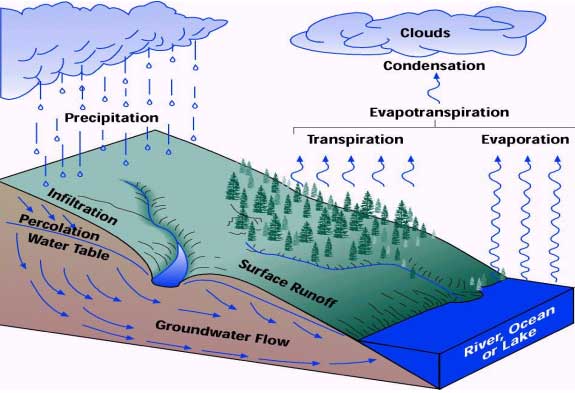What is Groundwater?
How does groundwater get in the earth? Where does it come from?
Groundwater begins as rain or snow that falls to the ground. This is called precipitation.
Only a small portion of precipitation will become groundwater. Most will run off the land surface to become part of a stream, lake, or other body of water. This water we call “surface water.”
Some water is used by plants and returned to the atmosphere. This is called transpiration. Some water evaporates off the land to become water vapor once again.
The remaining precipitation seeps, or percolates into the earth to become “groundwater.” These actions make up the Hydrologic Cycle.
Water is in a constant cycle of change, from one form to another. From liquid to vapor to ice or snow and back to a liquid state. This same water from rain or snow continues down through the soil until it reaches an area saturated with water, called the “saturated zone.” The top of the saturated zone is also known as the “water table.” Above the water table is the unsaturated zone full of rocks, soil and earth through which water percolated. The saturated zone below the water table has water that fills the spaces between rock particles (pores) or the cracks (fractures) in the rocks. This is where the groundwater that you drink, bathe in, and use for daily chores comes from. We call this geologic area of groundwater an AQUIFER.

